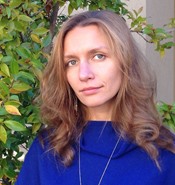Program Information
Energy Dependence of a Scintillation Detector
O Volotskova*, A Xu , G Jozsef , NYU Medical Center, New York, NY
Presentations
SU-F-T-561 (Sunday, July 31, 2016) 3:00 PM - 6:00 PM Room: Exhibit Hall
Purpose: To investigate the response and dose rate dependence of a scintillation detector over a wide energy range.
Methods: The energy dependence of W1 scintillation detector was tested with: 1) 50-225 keV beams generated by an animal irradiator, 2) a Leksell Gamma Knife Perfexion Co-60 source, 3) 6MV, 6FFF, 10FFF and 15MV photon beams, and 4) 6-20MeV electron beams from a linac. Calibrated linac beams were used to deliver 100 cGy to the detector at dmax in water under reference conditions. The gamma-knife measurement was performed in solid water (100 cGy with 16mm collimator). The low energy beams were calibrated with an ion chamber in air (TG-61), and the scintillation detector was placed at the same location as the ionization chamber during calibration. For the linac photon and electron beams, dose rate dependence was tested for 100-2400 and 100-800 MU/min.
Results: The scintillation detector demonstrated strong energy dependence in the range of 50-225keV. The measured values were lower than the delivered dose and increased as the energy increased. Therapeutic photon beams showed energy independence with variations less than 1%. Therapeutic electron beams displayed the same sensitivity of ~2-3% at their corresponding dmax depths. The change in dose-rate of photon and electron beams within the therapeutic energy range did not affect detector output (<0.5%). Measurements acquired with the gamma knife showed that the output data agreed with the delivered dose up to 3%.
Conclusion: W1 scintillation detector output has a strong energy dependence in the diagnostic and orthovoltage energy range. Therapeutic photon beams exhibited energy independence with no observable dose-rate dependence. This study may aid in the implementation of a scintillation detector in QA programs by providing energy calibration factors.
Contact Email:

